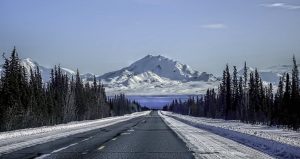Q: What is the capital of Alaska?
A: Juneau is the capital city of Alaska.
Q: How big is Alaska?
A: Alaska is the largest state in the United States, covering an area of approximately 663,268 square miles (1,717,856 square kilometers).
Q: Can you see the Northern Lights in Alaska?
A: Yes, the Northern Lights, or Aurora Borealis, can be seen in Alaska, particularly during the colder months from September to mid-April.
Q: What time of year is best to visit Alaska?
A: The best time to visit Alaska is between May and September when the weather is milder and days are longer. However, for winter sports and to see the Northern Lights, visit from December to March.
Q: Is Alaska dark for six months of the year?
A: No, Alaska is not dark for six months straight. However, some areas, especially those above the Arctic Circle, experience extended periods of darkness (polar night) in the winter.
Q: What wildlife can you see in Alaska?
A: Alaska is home to diverse wildlife, including brown bears, black bears, polar bears, moose, caribou, wolves, eagles, whales, and many other species.
Q: Do you need a passport to go to Alaska?
A: If you are a U.S. citizen traveling from within the United States, you do not need a passport to go to Alaska. However, if you are arriving from another country or traveling through Canada, you will need a passport.
Q: What is the population of Alaska?
A: As of my knowledge cutoff in 2023, the population of Alaska is estimated to be around 731,000 people.
Q: Is Alaska always cold?
A: While Alaska is known for its cold arctic climate, temperatures can vary greatly. Some areas can have warm summers with temperatures reaching up to 90°F (32°C), particularly in the Interior regions.
Q: What languages are spoken in Alaska?
A: English is the predominant language in Alaska, but you will also find native languages spoken by Indigenous Alaskan communities. Additionally, some parts of the state have a significant number of Russian and Spanish speakers.
Q: Is it expensive to live in or visit Alaska?
A: The cost of living in Alaska is generally higher than the U.S. average due to its remote location. Similarly, visiting Alaska can be more expensive compared to other U.S. destinations, with costs varying depending on the activities and regions visited.
Q: What are the major industries in Alaska?
A: Major industries in Alaska include oil and gas, fishing, tourism, and forestry.
Q: Can I drive to Alaska?
A: Yes, you can drive to Alaska. Many travelers use the Alaska Highway, which starts in Dawson Creek, British Columbia, Canada, and runs to Delta Junction, Alaska. Remember to carry proper identification for crossing international borders if you take this route.
Q: What is the Alaska Permanent Fund Dividend (PFD)?
A: The Alaska Permanent Fund Dividend is a yearly payment made to eligible residents of Alaska, which comes from a portion of the earnings of the Alaska Permanent Fund, a state-owned investment fund established with oil revenues.
Thanks to our team Gutter Pro for helping us compile this list!
Q: How long does daylight last in Alaska during summer?
A: During the peak of summer, some parts of Alaska can experience up to 24 hours of daylight, known as the Midnight Sun. This phenomenon is particularly noticeable the closer you get to the Arctic Circle.
